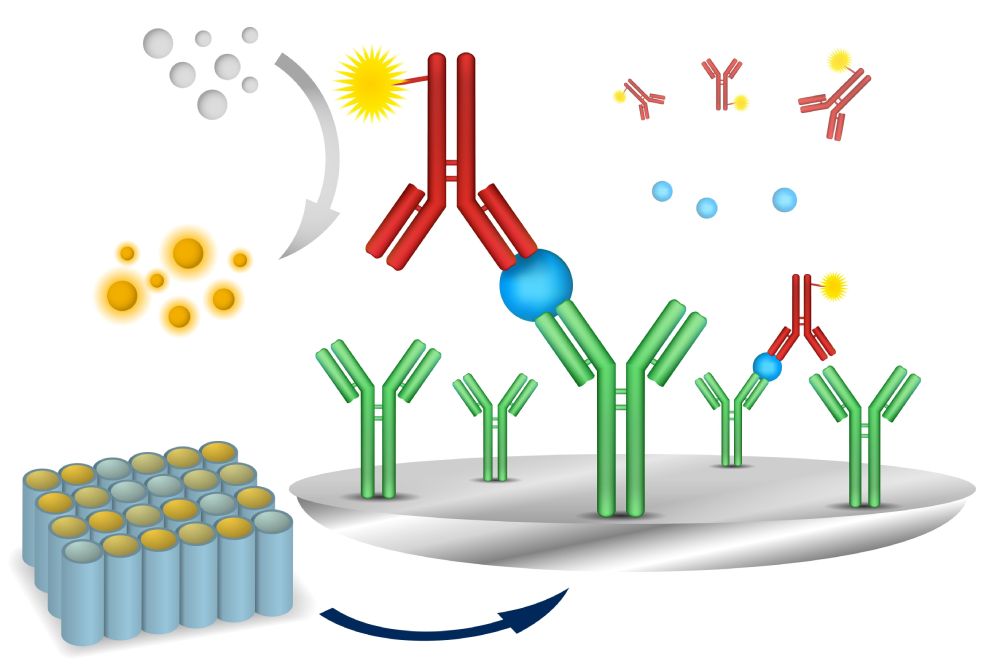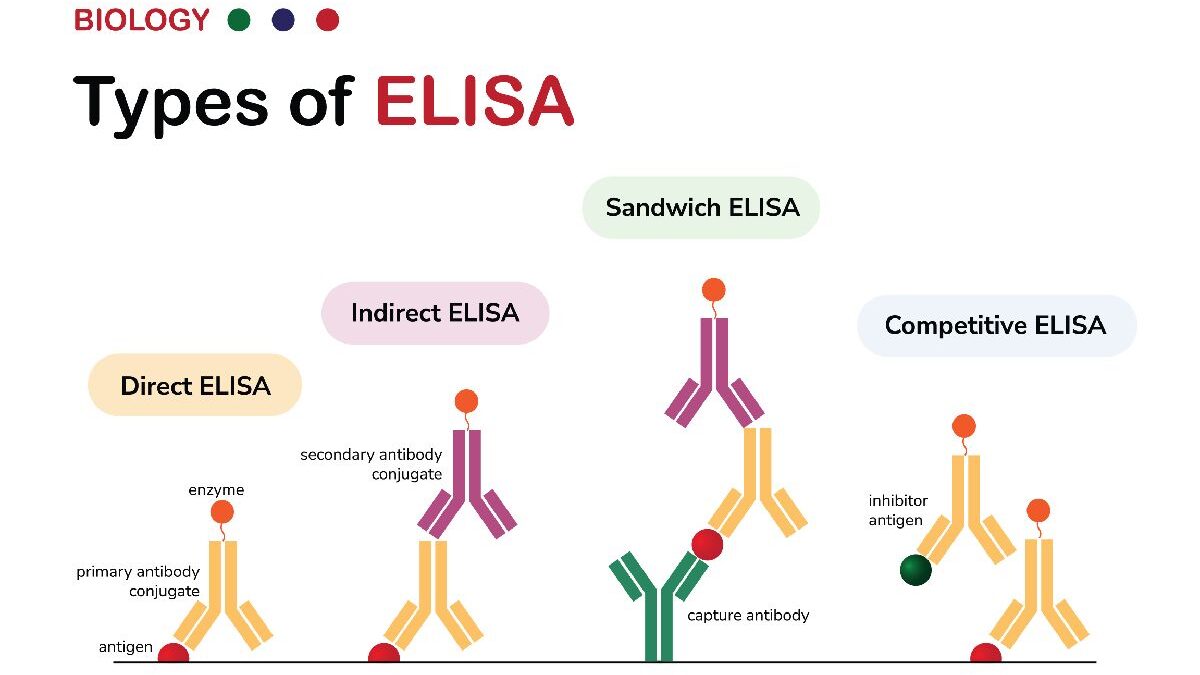Enzyme-Linked Immunosorbent Assay (ELISA) is vital in biomedical and biochemical research. Known for its impressive sensitivity and specificity, ELISA detects and measures substances such as peptides, proteins, antibodies, and hormones, contributing to various scientific domains.
But what is ELISA assay? This advanced biochemical technique is employed to determine the presence of specific substances within a sample, offering researchers a broad spectrum of possibilities for investigation. With different types of ELISA, each featuring unique protocols and applications, this technique has many uses you need to know about.
The following sections will discuss the ELISA types and myriad applications you need to know about:

Table of Contents
Direct ELISA
Direct ELISA, a common variant of the ELISA technique, is simple. It involves a single binding step where an antigen in the sample directly binds to an antibody that has been coated onto a plate. This antibody is linked to an enzyme. Hence the term “enzyme-linked.”
This method is beneficial when researchers have a well-known and characterized antibody for the antigen they are studying. It’s often employed in scenarios where rapid detection is crucial. One primary application is in diagnosing viral and bacterial infections, where it’s critical to identify the pathogen swiftly.
Despite its simplicity, the Direct ELISA has its drawbacks. It’s susceptible to high background noise due to non-specific binding, which may affect the results’ accuracy. Nevertheless, it’s valued for its speed and ease, proving invaluable in many diagnostic scenarios.
Indirect ELISA
Indirect ELISA is a version of the ELISA assay that’s designed to detect the presence of specific antibodies within a test sample. It’s named “indirect” because it requires a two-step process to confirm the presence of the target antibody. Firstly, an antigen is adhered to a surface. Then, the test sample is added. If the target antibodies are present, they will bind to the antigen.
Indirect ELISA is most frequently used in medical and veterinary diagnostics. It’s beneficial for detecting antibodies against viruses, bacteria, and other pathogens, making it a critical tool in the fight against infectious diseases. For example, it’s commonly used to confirm HIV, Lyme disease, and certain types of viral hepatitis.
It’s worth noting that indirect ELISA also has its place in immunology research. Scientists use it to quantify and compare antibody levels in different samples, which aids in understanding immune responses. Despite its relatively complex procedure, the method’s sensitivity and specificity have solidified its position in diagnostic and research settings.
Sandwich ELISA
As the name suggests, it involves a ‘sandwich’ of complex molecules. It’s uniquely designed so that the antigen to be measured is bound between two layers of antibodies. The first antibody, immobilized on a surface, captures the antigen, while the second enzyme-linked antibody recognizes a different epitope on the antigen, forming the ‘sandwich.’
This type of ELISA is well-suited to detect and quantify antigens with multiple epitopes. It’s often favored when dealing with complex samples since it provides higher specificity. The ‘sandwich’ structure makes it less prone to false positives, enhancing the reliability of the results.
Applications of Sandwich ELISA are extensive, spanning many sectors. In clinical diagnostics, it’s widely used to detect potential disease markers. In the research realm, it’s invaluable in studying cytokine and growth factor levels. Additionally, it’s used in the food industry for allergen detection, ensuring the safety of consumer products.
Competitive ELISA
The competitive ELISA stands out among other ELISA techniques due to its unique mechanism. Unlike other types, it’s based on competition between an unlabeled antigen (present in the sample) and a labeled antigen for antibody binding sites.
Competitive ELISA has an important place in scientific applications. It’s commonly used when sample antigens are minor and have only one antigenic determinant or when there’s a need to detect antibodies against non-immunogenic antigens. Undoubtedly, it’s an invaluable tool in modern diagnostic and research scenarios.
Multiplex ELISA
Multiplex ELISA is a step up from traditional ELISA techniques, and it’s designed to measure multiple analytes within a single sample simultaneously. Unlike its counterparts, it’s incredibly efficient, saving time and sample volume. Plus, it’s valuable in studies where sample quantities are limited, such as neonatal or pediatric research.
The applications for this method are numerous and diverse. Clinical research has been instrumental in analyzing complex biological pathways associated with disease states, such as inflammation, cancer, and autoimmune disorders. From a research perspective, it’s enabled high-throughput screening and biomarker identification, paving the way for a deeper understanding of various biological processes and disease mechanisms.
Conclusion
Thanks to its notable sensitivity and specificity, ELISA is indispensable in biomedical and biochemical research. Its variations—Direct, Indirect, Sandwich, Competitive, and Multiplex—contribute significantly to advancements in healthcare and scientific understanding. Each type, with its unique strengths and challenges, serves many applications, from pathogen detection to exploring complex biological pathways.

